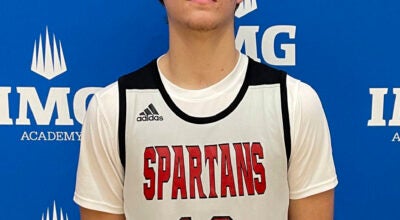The law of unintended consequences
Published 11:16 am Wednesday, December 7, 2022

- Josh Boutwell Sports Editor
|
Getting your Trinity Audio player ready...
|
When the NCAA announced it would be changing transfer rules in college football a few years ago, and once those rules went into effect, to allow all college athletes a one-time transfer without penalty it didn’t take long to see the affect it had on college football and now that is being felt more than ever.
During the 2021-2022 cycles more than 3,000 FBS players entered the transfer portal and after the portal cycle for 2023 officially opened on Monday, Dec. 5, it’s been reported than nearly 700 players have entered. That’s not even including FCS, Division II and JUCO transfers. That number will likely swell to well over 1,500 by the Jan. 18, 2023 deadline to enter the portal.
Few schools – especially among the Power 5 ranks – have been immune to feeling the sting of players entering the portal. Alabama, for example, has seen nine highly touted recruits jump into the portal. Auburn has lost six players to the portal, as well. Coaches like new Colorado head coach Deion Sanders will likely greatly benefit from the transfer portal, at least this offseason, as he did at Jackson State. A number of top prospects have already expressed their interest in Colorado on social media.
Personally, I’ve always been in support of rule changes that benefit the athletes in college football. If a head coach can up and leave whenever they choose, why shouldn’t a player? That seems pretty straight forward on its face but there’s a side to the transfer portal that doesn’t get much attention.
Obviously, losing players – especially starters – to the transfer portal will harm any team, but any team in the country can also benefit from having the opportunity to bring in a player that’s already developed into a playmaker. The problem is that for those players that aren’t already developed – or weren’t highly touted recruits coming out of high school – it can also be a big risk.
According to the statistics that the NCAA released earlier this year, almost half of those players that entered the transfer portal in 2021 were unable to find a new school. That number is staggering.
According to the NCAA, 41 percent of FBS (Division I-A) players that entered the transfer portal between 2020 and 2021 had not found a new school, transferred to a non-NCAA school or left the sport completely. While 59 percent of those transfers did find a new FBS school, 8 percent left a scholarship to become a walk-on at a new school.
Those numbers are starting to impact the other levels of college football, as well. Between 2020 and 2021, only 36 percent of FCS (Division I-AA) transfers found a new school to sign with. In 2017, the year before the transfer portal began, Big 10 schools signed 16 junior college (JUCO) players. That number was down to just 10 JUCO players in 2020. While the top JUCO prospects will still find homes, it will be harder and harder for other JUCO athletes to do so as the years go on.
So, while the transfer portal gives players across the country more options, and it “evens the playing field” a bit for schools across the country, there is simply more players in the transfer portal than there are scholarships available.
Another aspect to look at is high school recruiting. Less scholarships available at FBS schools – because of taking more and more transfers – will lead to more players going the FCS, Division II or JUCO route that maybe wouldn’t otherwise. That then trickles down more when those players then look to jump into the portal later on. That also means that high school players that maybe would have received a Division II or JUCO scholarship out of high school before won’t receive any at all.
The NCAA seems to be taking a very hands-off approach to trying to mitigate the growing “free agency” in college football. If we’re saying that this is all for the benefit of the student-athletes my hope would be that at the very least someone – outside of players’ coaches, family and friends – are trying to advise these players on the landscape of the transfer portal and how risky it actually is. Options are always great but the thought of 100s of athletes losing the opportunity to play at a school, at all, for a risk that they didn’t fully understand they were taking doesn’t sit well with me. But what do I know?





